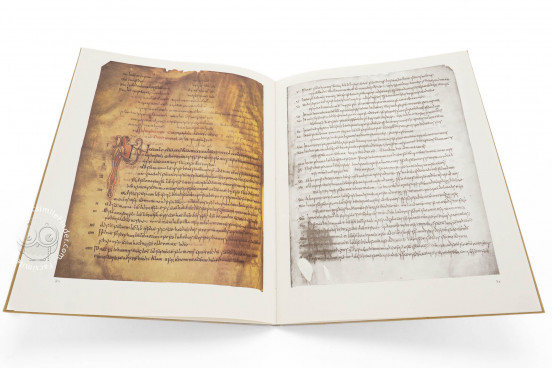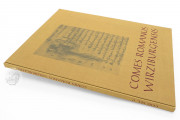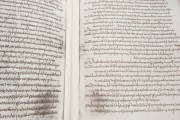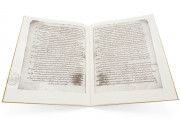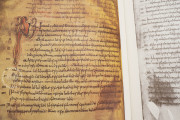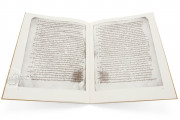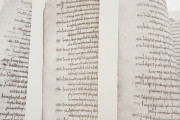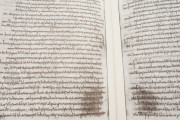Probably dating from the mid-eighth century, the Würzburg Comes is the earliest extensive witness to the selection of biblical readings for the Christian Mass. The codex was written by a scribe trained to write the regional minuscule of England. Given the centuries it took to standardize and agree upon the set of readings for the liturgy, the Würzburg Comes is an important document for understanding the history and development of the lectionary for the Latin rite. It boasts one zoomorphic monogram.
The book derives its designation comes ("companion") from the fact that lists of readings for the Mass appear first as accompaniments (or companions) to biblical texts. The Würzburg Comes, however, appears to have been created as an independent book.
Reflection of the Early Liturgy of the City of Rome
The manuscript opens with a calendar listing the Roman churches, or stations, where papal processions made ceremonial stops on the way to the church where Mass would be celebrated on solemn feast days. This section lists 212 stations in all, with the most important feasts listing many on a single day (fols. 1r-2v).
The lists of lections follow. The incipits and explicits of the Epistle readings (255 of these)—taken from the New Testament epistolary books and the Acts of the Apostles, as well as from the Old Testament—occupy most of the book (fols. 2v-10v). The next section lists readings from the Gospel accounts of the life of Christ (fols. 10v-16v). The Comes is thus a guide to the biblical readings for the liturgy of the Mass as it was celebrated in Rome in the early Middle Ages, and scholars think it reflects Roman practice around 645.
Characteristic Insular Decoration
The list of Epistle readings is introduced by an enlarged zoomorphic monogram forming the first word of the heading for the first Christmas reading, IN (fol. 2v). The letters are composed of three fantastic, elongated quadrupeds. The monogram is colored with lead red and ocher and is surrounded by red dots, a characteristic of Insular art of the period. The crossbar and right upright of the N intersect with the first letter of the next word (NATALE).
The text is written in Insular Minuscule, but it is unclear where the book was made. The calendar is written in one, two, and three columns, and the lists of lections are written in long lines (a single column). The manuscript's scribes—there were likely two at work here—may have been working in England, but the focus on the Roman stational churches also suggests Rome as a place of origin.
A Chained Book in the Cathedral Library
It has been suggested that the Comes may have been compiled in Rome at the behest of Saint Burchard (d. 753/754), an English missionary who served as bishop of Würzburg. The manuscript certainly was used at the Würzburg cathedral. The codex retains the wooden boards of its medieval binding dating from its time at the cathedral. The hole and slot positioned at the top of the back cover suggest that the book was chained in the cathedral library.
We have 1 facsimile edition of the manuscript "Würzburg Comes": Comes Romanus Wirziburgensis facsimile edition, published by Akademische Druck- u. Verlagsanstalt (ADEVA), 1968
Request Info / Price
